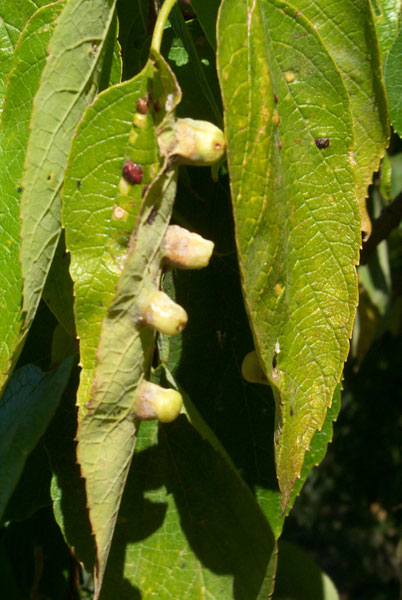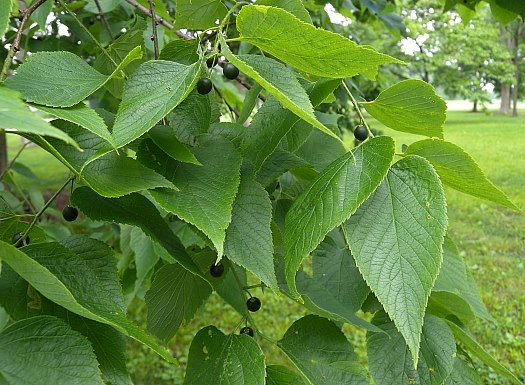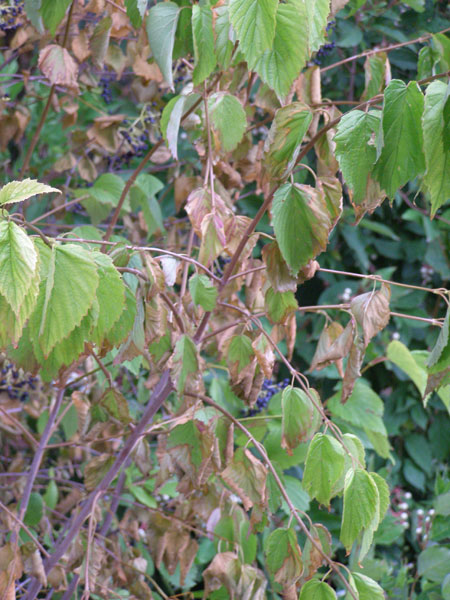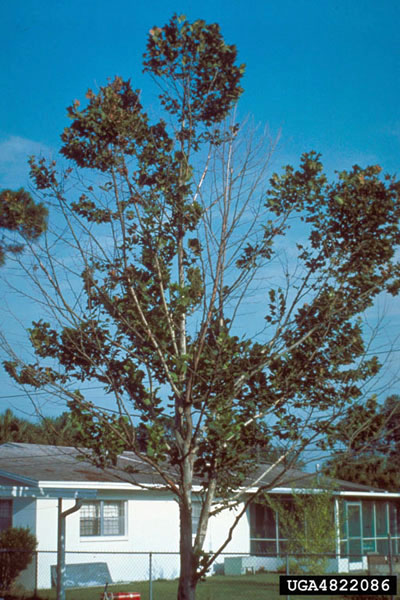hackberry tree leaves turning black
Trees most commonly affected are hackberry sycamore and oak. The Common Hackberry is botanically called Celtis occidentalis.

Hackberry Tree On The Tree Guide At Arborday Org
When I see black soot on certain plants that are not prone to any specific insect I always ask whats above this plant.
. 28 Votes Heat and drought stress will cause the tree to lose leaves that it cannot support with the available soil moisture. The leaves are ovoid and the flowers are greenish-white. Premature leaf drop can occur during heavy infestations.
As a result a black mold known as sooty mold covers the leaves stems and possibly the bark of the tree. Plant form of common hackberry. 18th to 316th long.
10 24 m wide. This causes the characteristic bleached appearance of the leaves that actually is clusters of tiny whitish dots or chlorotic specks on the upper leaf surfaces. The tree likes Sun to half-shade at the location and the soil should be sandy to loamy tolerates dryness.
It has branches that grow close to the ground and it has leaves. Many will land on lower leaves but washing will remove them to the ground. Leaves are smooth not rough on the uppersurface.
The foliage of trees infected with armillaria mellea starts to discolor and drop prematurely. The leaves will stay on the ground for about 2 weeks before decomposing into nutrients for other plants to use. The aphids infest the lower sides of leaves in large numbers creating small globs of fuzzy mass.
They overwinter as eggs on the tree and emerge in the spring with new leaf growth. Leaves on hackberry trees are simple leaves that are arranged alternately on crooked branches. 15 21 m tall and 30 to 80 ft.
The hackberry trees leaves change color in the fall turning yellow before falling off of the tree. Not hairy on the undersurface. Raised cushion-like bumps on affected branches may be cream to orange or red turn black with age.
The tiny winged bugs are probably hackberry lace bugs. Hackberry has unremarkable small green drooping flowers. Fruit are orange red to black only to about ¼ inch wide.
Certain trees such as hackberry can drop all of the leaves and enter summer dormancy. Winged forms may also be observed and wings have obvious black markings on them. Lace bugs are sap feeding insects commonly found on the leaves of shade and ornamental trees in Iowa.
They feed on sap and produce large amounts of honeydew which can in turn cause problems with black sooty mold growth. Female flowers develop into green berry-like drupes that turn dark black in the fall. Sugarberry trees grow between 50 and 70 ft.
The underside of heavily infested leaves will be speckled with small black shiny varnish spots excrement. 465 75 Views. Dead branches and twigs often first observed in early spring when no leaves form.
The hackberry tree is a deciduous tree that grows in North America. Yellow discolorations on upper leaf surface above the nipple galls. Or wilting soon after leaves emerge in spring.
More information on Hackberry nipple. Another key feature of the hackberry is its bark -- the young bark is smooth and light greyish-brown in colour and matures into a darker greyish-brown colour with corky irregular ridges and a warty texture. This black sticky substance covers the hackberry tree and it can cover any plant or object underneath it.
Hackberry leaves have teeth and taper towards the tip. Occurs in the same kinds of habitats as common hackberry bottomlands as well as uplands with a slight preference for bottomlands. This will also reduce the damage being done to the tree.
Also known as American hackberry common hackberry Celtis occidentalis is a fast-growing member of the elm family. Another name for Celtis laevigata is southern hackberry. The Tree is a deciduous tree it will be up to 25 m 82 ft high.
Lace bugs feed on the underside of the leaves. It is generally absent from the northern third of Missouri. During spring and summer the females will reproduce asexually.
Plants heavily damaged by lace bugs usually have the underside heavily speckled with small black shiny varnish spots excrement. Sunken dark brown area on branch that is often cracked or has a ridge at the edge. Leaves that drop are most often yellow with no discernible disease spots.
Lewis says that the aphids eating the tree sap and the sticky residue left behind isnt harmful to the trees. The browning of the hackberry Celtis occidentalis leaves is probably due to lace bugs. The insects feed on the sap from the leaves and secrete sticky honeydew that in turn encourages the growth of black sooty fungus on infested tree areas.
You may not be able to reach the top of an 80-foot-tall tree without a power washer or commercial spray device but even if you dont reach the top of the tree you can reduce the severity of the problem. Raised cushion-like bumps on affected branches may be cream to orange or red turn black with age. According to the University of Tennessee Extension Agency a sooty mold fungi will grow on the sugary substrate and over time turn leaves bark and other items where the honeydew lands black.
The hackberry is an exceptionally hardy tree in fact experts have referred to it as one tough tree The hackberry can be grown in various soils and locations and they can thrive under a wide range of temperatures and conditions including regions that see upwards of 50 inches of rainfall each year although the tree itself actually doesnt require a lot of water. Adult lace bugs have attractive wings that are beautifully sculptured with an intricate pattern of veins resembling. Circular nipple-like swellings that project from the undersides.
Also called the sugar hackberry the sugarberry tree is a native medium-sized tree with pointed leaves small clusters of greenish flowers and reddish-purple edible fruit. These edible fruits which have a flavour similar to dates mature to a purple-black colour in the early fall and persist on the tree throughout the winter. They have asymmetrically sized leaf bases are sharply toothed green and grow to a sharp point.
Adults are light brown with flecks of creamish-white and look like miniature cicadas. Occidentalis is a large native tree found commonly on river terraces and floodplains in southern and central MinnesotaIt is related to the American elm and after the arrival of Dutch elm disease in Minnesota hackberry often replaced American elms both in native forests and in planted landscapes. They pierce the leaf epidermis with their sucking mouthparts and cause the characteristic pale yellow scorched or bleached discoloration on the upper leaf surfaces.

What S Wrong With My Plant Garden University Of Minnesota Extension
Celtis Occidentalis Hackberry Minnesota Wildflowers

Hackberry Trees Are Under Attack

What S Behind That Black Sticky Substance From Your Hackberry Tree

Ut Tsu Extension Davidson County Hackberry Trees Turning Black Since The Beginning Of The Year 2000 The Majority Of Exotic Insect Pests That Have Been Introduced Into The United States Have

Northern Hackberry Real Paleo Food Four Season Foraging

Common Hackberry Celtis Occidentalis

What S Wrong With My Plant Garden University Of Minnesota Extension

What S Wrong With My Plant Garden University Of Minnesota Extension